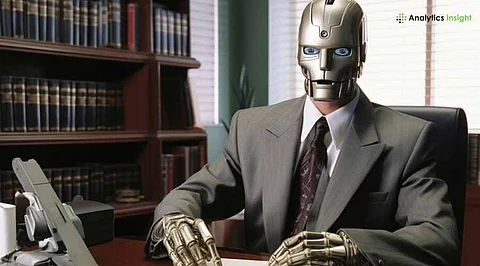

Artificial intelligence (AI) has disrupted sectors, but where it merges with intellectual property (IP) law is a novel challenge. Fast-paced machine learning and generative tech have deluged existing legal frameworks, and issues of ownership, infringement, and accountability remain. Courts, legislatures, and scholars today grapple with applying longstanding IP principles to this new world of bits and bytes.
Artificial intelligence programs currently create music, paintings, texts, and even software code with minimal human touch. DALL-E and ChatGPT are some of the tools that reflect such potential, producing results as good as, if not better than, those of humans.
Over 500 patent applications worldwide in 2024 alone dealt with AI-made inventions, reported World Intellectual Property Organization data. The bubble puts to test the underlying assumption that IP protects human creativity. Legal principles under the assumption of a human writer are strained by machines that cut across those lines.
Establishing ownership of works produced by AI is contentious. Copyright law, for example, usually demands human authorship. In 2023, the U.S. Copyright Office declared an AI-generated graphic novel ineligible for protection based on no human contribution except prompting.
In contrast, South Africa patented in 2021 an AI system, DABUS, for an invention, causing controversy. Should the programmer, the user, or the AI itself be granted rights? There is no agreement, and IP law hangs in the balance as jurisdictions split.
AI’s ability to replicate or remix existing works raises infringement concerns. Generative models are trained on enormous datasets, sometimes containing copyrighted content. A 2025 European example involved a record label suing an AI platform for creating songs that sounded uncannily like its catalogue, citing unauthorized use of training material.
Establishing intent or tracing origin in such situations makes enforcement more difficult. Liability is uncertain, whether it rests with developers, users, or the impenetrable algorithms themselves, only further obscuring legal waters.
Patent systems have particular challenges with AI. Classic demands call for an inventor to reveal how an invention operates, but the "black box" of AI conceals its processes. The DABUS case was representative: the owner of the AI asserted that it independently developed a container design, but critics questioned verifiability.
Patent offices worldwide grapple with whether AI can be regarded as an inventor or whether human oversight must still be a requirement. Increased applications necessitate prompt clarification.
Aside from legality, economic and ethical interests hang in the balance. Inventors and artists are afraid AI cheapens human work, inundating markets with mass-produced imitations. A 2024 International IP Forum study reported that 30% of creators polled were concerned about lost revenue from AI competition.
On the other hand, advocates argue AI brings innovation to the masses, equalizing the playing field for small businesses. That fine balance remains to be met between safeguarding creators' rights and not stifling technological progress.
Regulatory approaches differ worldwide, making it all the more complex. The European Union has a leaning towards stringent data and IP regulations, illustrated by its AI Act of 2024 demanding transparency in training datasets. The United States is inclined towards light hands, fostering innovation at the cost of restriction.
China vigorously patents AI technology, frequently avoiding authorship disputes. This quilt threatens forum shopping, wherein players take advantage of lenient jurisdictions, frustrating global IP consistency.
Tackling these problems requires reform. One idea is to introduce a new IP category for AI-generated works, separate from human copyrights or patents, with specific protections and terms. A fifth calls for affirmative disclosure of the use of AI in creative work as a condition enforceable at ease.
Courts will also adapt the fair use principle to take account of training material, balancing right and innovation. International cooperation, perhaps in treaty form, would standardize approaches and diffuse jurisdictional tension.
AI’s collision with IP law exposes gaps in ownership, infringement, and inventorship rules. Emerging challenges test the resilience of frameworks designed for a pre-AI era. Thoughtful adaptation, blending innovation with fairness, offers the best hope for resolution. The stakes: economic, ethical, and legal; underscore the urgency of this evolving frontier.
